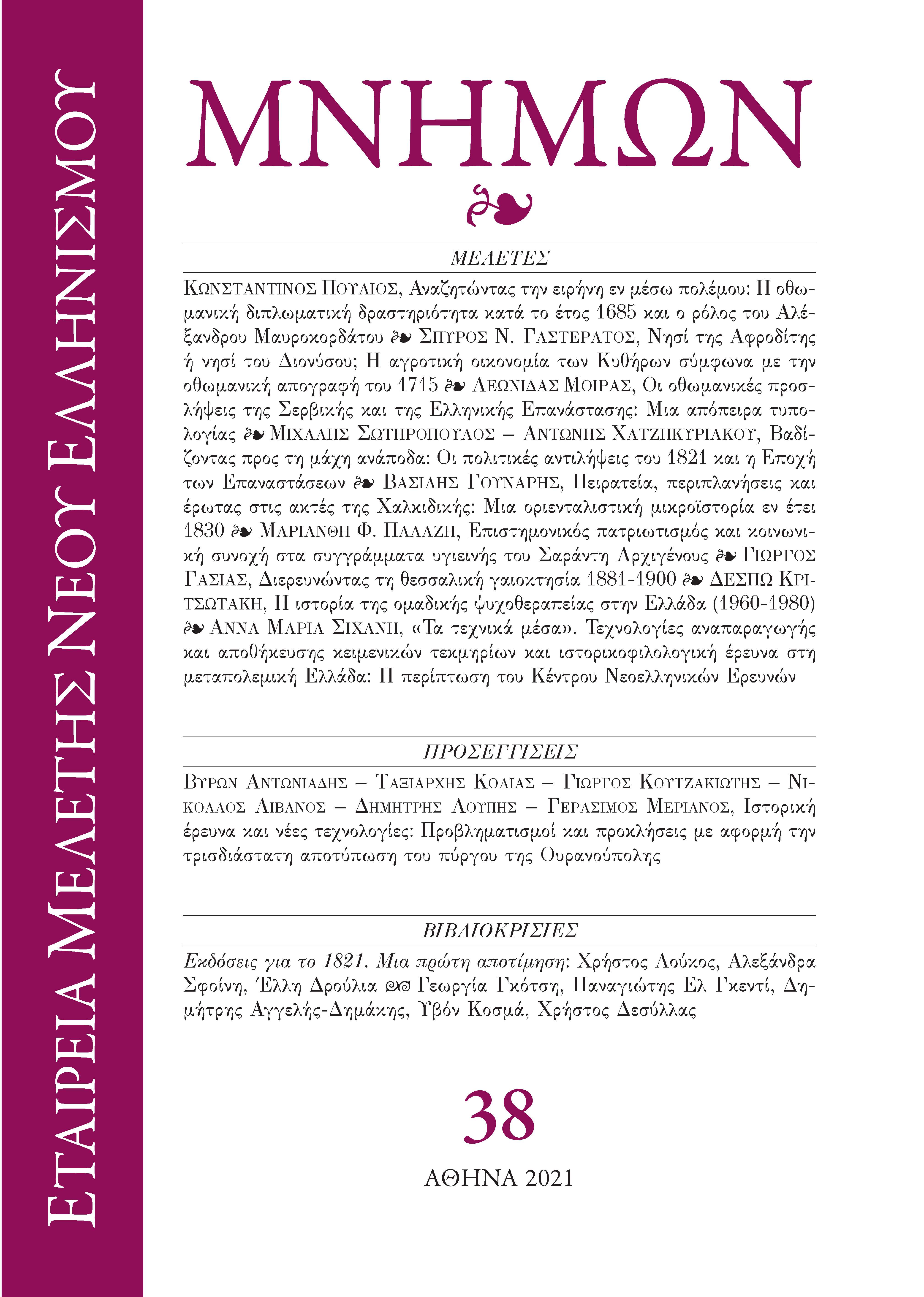THE ISLAND OF APHRODITE OR DIONYSUS? THE AGRARIAN ECONOMY OF KYTHERA ACCORDING TO THE OTTOMAN CADASTRAL SURVEY OF 1715

Abstract
The aim of this article is to investigate the agrarian economy of Kythera in 1715, after the conquest of the island by the Ottomans during the Ottoman-Venetian War (1715). The source on which the research is based, is Kythera’s (Çuka adası for the Ottomans) cadastral survey (tahrir defteri) which was carried out by the new political dominant and has been published by Evangelia Balta. Bearing in mind that Ottoman tahrirs had a fiscal usage for the Sublime Porte and their serial data based on anticipated, not real, production, the various tax units are being analyzed. Through survey’s pages, Kythera’s economic activity is being showed; grain, legumes, onions, olive oil, grape must, flax, beehives, cotton, stock farming. The low productivity in grain is being replaced by the vigorous olive oil and grape must productions, the important stock-farming, flax, cotton and beehive productions as well. Especially grape cultivation was by far the biggest crop of the island in 1715; indeed, the 735.005 kilograms of grape must that have been estimated as Kythera’s total production, feature the island as an important wine center and, subsequently the island of Dionysus, the ancient god of wine-making and not the island of Aphrodite, who according to Greek mythology was born in Kythera. As far as the equipment is concerned, it was plain, limited to 22 mills in the whole island. By using sources of the Venetian era and by drawing on examples from the Ottoman island world, is being realized that the Kythereans had in their possession gardens, domestic animals and the essential equipment for the processing of their production; apart from these, fishing and hunting constituted an important activity which was not illustrated in the Ottoman survey.
Article Details
- How to Cite
-
GASTERATOS, S. N. (2024). THE ISLAND OF APHRODITE OR DIONYSUS? THE AGRARIAN ECONOMY OF KYTHERA ACCORDING TO THE OTTOMAN CADASTRAL SURVEY OF 1715. Mnimon, 38(38), 33–56. https://doi.org/10.12681/mnimon.38203
- Issue
- Vol. 38 (2021): Μνήμων
- Section
- ARTICLES

This work is licensed under a Creative Commons Attribution-NonCommercial-ShareAlike 4.0 International License.
The copyright for articles in this journal is retained by the author(s), with first publication rights granted to the journal. By virtue of their appearance in this open access journal, articles are free to use (with the exception of the non-granted right to make derivative works) with proper attribution for non-commercial uses (licence Creative Commons 4.0). EKT/NHRF retains the worldwide right to reproduce, display, distribute, and use articles published in Mnimon in all formats and media, either separately or as part of collective works for the full term of copyright. This includes but is not limited to the right to publish articles in an issue of the Journal, copy and distribute individual reprints of the articles, authorize reproduction of articles in their entirety in another EKT/NHRF publication, and authorize reproduction and distribution of articles or abstracts thereof by means of computerized retrieval systems.

